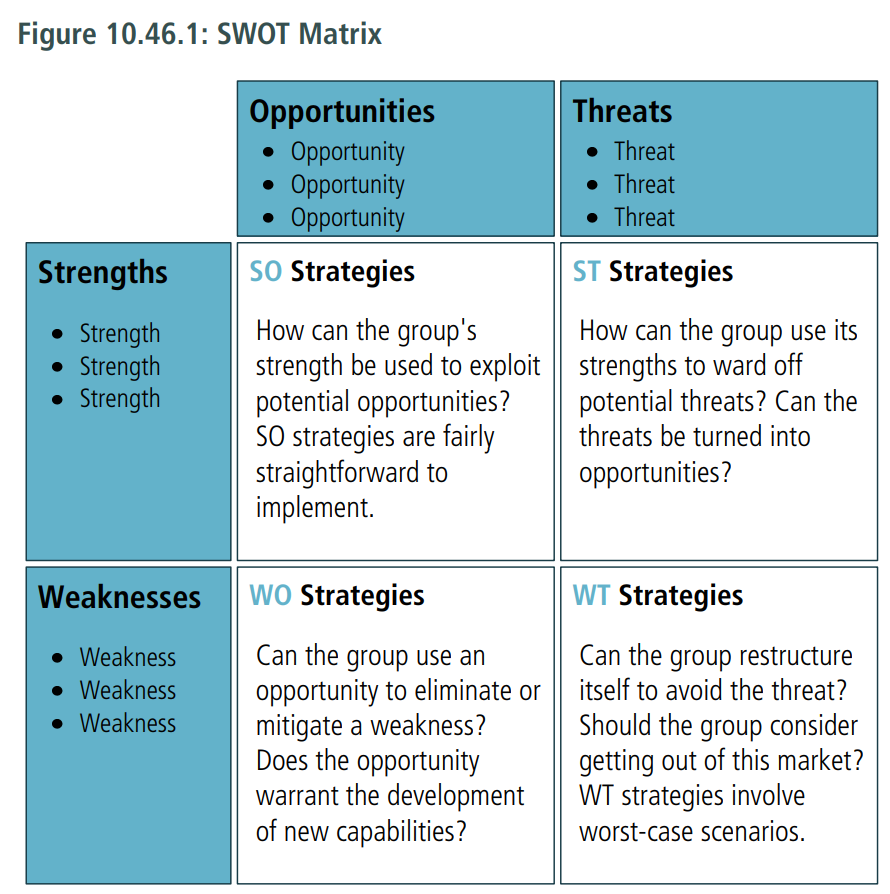10.46.1 Purpose
SWOT analysis is a simple yet effective tool used to evaluate an organization’s strengths, weaknesses, opportunities, and threats to both internal and external conditions.
10.46.2 Description
SWOT analysis is used to identify the overall state of an organization both internally and externally. The language used in a SWOT analysis is brief, specific, realistic, and supported by evidence. SWOT analysis serves as an evaluation of an organization against identified success factors. SWOT can be performed at any scale from the enterprise as a whole to a division, a business unit, a project, or even an individual. By performing SWOT in a disciplined way, stakeholders can have a clearer understanding of the impact of an existing set of conditions on a future set of conditions.
A SWOT analysis can be used to:
- evaluate an organization’s current environment,
- share information learned with stakeholders,
- identify the best possible options to meet an organization’s needs,
- identify potential barriers to success and create action plans to overcome barriers,
- adjust and redefine plans throughout a project as new needs arise,
- identify areas of strength that will assist an organization in implementing new strategies,
- develop criteria for evaluating project success based on a given set of requirements,
- identify areas of weakness that could undermine project goals, and
- develop strategies to address outstanding threats.
10.46.3 Elements
SWOT is an acronym for Strengths, Weaknesses, Opportunities, and Threats:
- Strengths (S): anything that the assessed group does well. May include experienced personnel, effective processes, IT systems, customer
relationships, or any other internal factor that leads to success. - Weaknesses (W): actions or functions that the assessed group does poorly or not at all.
- Opportunities (O): external factors of which the assessed group may be able to take advantage. May include new markets, new technology, changes in the competitive marketplace, or other forces.
- Threats (T): external factors that can negatively affect the assessed group.
They may include factors such as the entrance into the market of a new competitor, economic downturns, or other forces.
Beginning a SWOT analysis with opportunities and threats sets the context to identify strengths and weaknesses.

10.46.4 Usage Considerations
.1 Strengths
- Is a valuable tool to aid in understanding the organization, product, process, or stakeholders.
- Enables business analysts to direct the stakeholders’ focus to the factors that are important to the business.
.2 Limitations
- The results of a SWOT analysis provide a high-level view; more detailed analysis is often needed.
- Unless a clear context is defined for the SWOT analysis the result may be unfocused and contain factors which are not relevant to the current situation.
